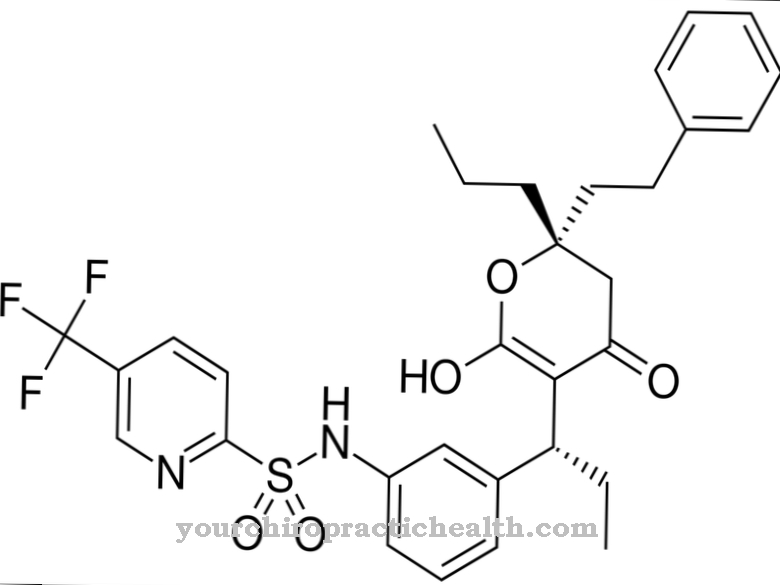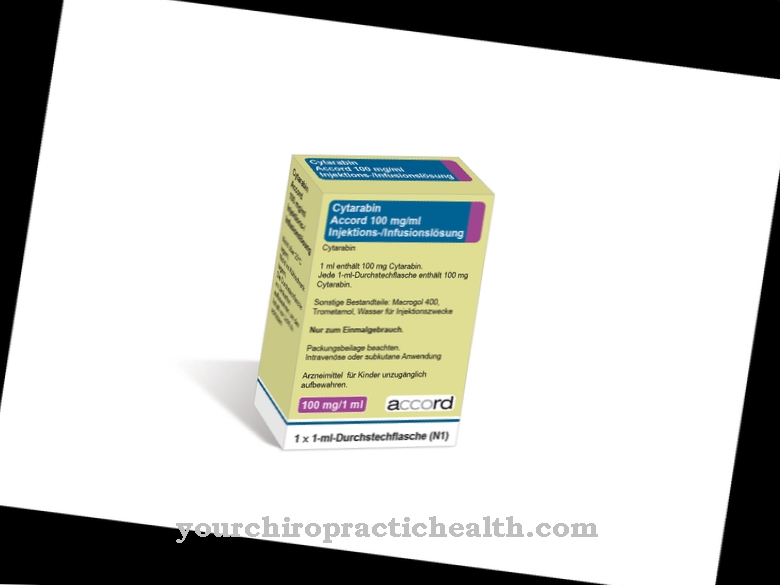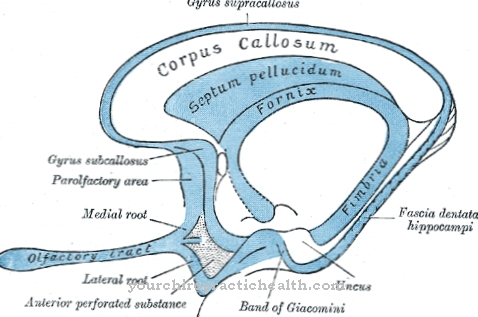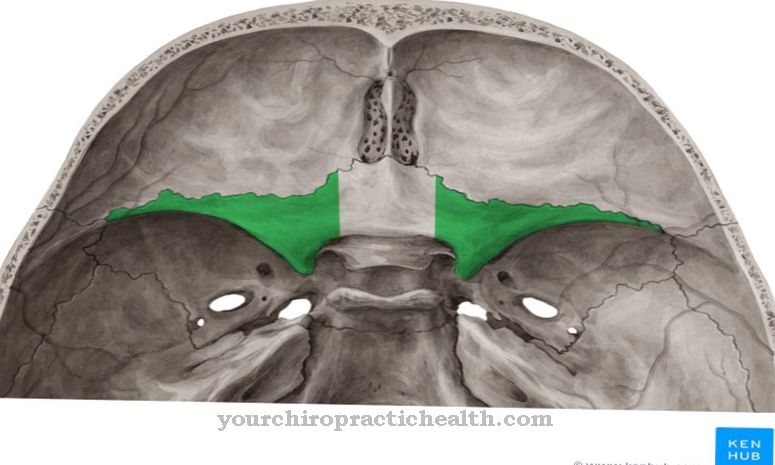At Fluphenazine is an active ingredient that has been used successfully as a neuroleptic in human medicine since the 1960s due to its properties. Fluphenazine is u. a. Indicated for psychotic syndromes with delusions and hallucinations, diagnosed schizophrenia and psychomotor agitation.
What is fluphenazine?
The medical drug fluphenazine was approved in the Federal Republic of Germany in 1961 for the treatment of diseases. The substance was prescribed in tablet form under the trade names Omca® and Lyogen® and used to treat various psychological and psychiatric illnesses.
Due to its properties, the white solid is classified as a neuroleptic drug and forms part of the group of so-called phenothiazines. Fluphenazine has a moral mass of 437.52 g / mol. In chemistry and pharmacology, the drug is described by the empirical formula C 22 - H 26 - F 3 - N 3 - O - S.
Even today, it is only taken orally in tablet form. In addition to the well-known trade names, fluphenazine is also commercially available as a generic.
Pharmacological effect
Fluphenazine is an active ingredient from the group of phenothiazines. As such, it is considered a neuroleptic and has antipsychotic and sedating properties. Fluphenazine is one of the so-called highly potent neuroleptics, which also includes the related drugs haloperidol and perphenazine. These form the neuroleptically most potent group of the first generation of neuroleptics.
The pharmacological action of fluphenazine makes the drug a dopamine antagonist. It binds competitively to the dopamine receptors (D2 receptors) in the human brain and thereby inhibits the binding of the messenger substance dopamine. There is a slightly sedating, antipsychotic and drive-reducing effect.
In addition to its effect on the dopamine receptors, fluphenazine is also active on the serotonin receptors (5HT2 receptors). Here, too, binding of the messenger substance serotonin is prevented, which leads to an intensification of the sedative, antipsychotic and drive-reducing effects.
Medical application & use
Since fluphenazine, unlike other neuroleptics such. B. Triflupromazine, only triggers neuroleptic or sedating effects, the active ingredient in human medicine is used exclusively in psychiatry. In veterinary medicine, however, fluphenazine is also used as a sedative to induce anesthesia.
The neuroleptic is taken orally as a film-coated tablet by patients after a doctor's prescription. It is sold exclusively through pharmacies, as the drug is subject to prescription and pharmacy requirements in Europe and the USA.
Currently, the drug is only used in mono preparations. Drugs that contain fluphenazine as the active ingredient are indicated if a patient has been diagnosed with schizophrenia. In these cases, fluphenazine can be prescribed to prevent relapse or to treat chronic psychoses. Fluphenazine is also prescribed for thought disorders, acute delusions, hallucinations and ego disorders. The application can be short or long term, depending on the treatment goal, the latter being the rule.
You can find your medication here
➔ Medicines to calm down and strengthen nervesRisks & side effects
Before taking fluphenazine for the first time, it must be checked whether there is an intolerance (allergy) to the active ingredient. If this is the case, treatment should not be carried out. Such a contraindication is also given if patients suffer from severe kidney or liver dysfunction. In addition, taking neuroleptics can increase the effects of painkillers and anesthetics. The dose of the preparations used must therefore be reduced accordingly before an operation. Since fluphenazine also increases the effect of alcohol, nothing should be drunk shortly before or after taking the active ingredient.
Because fluphenazine is a neuroleptic, unwanted side effects can occur after taking it. However, this does not necessarily have to be the case. However, some patients report disorders of the extrapyramidal motor system (EPMS). These are usually expressed through a tremor (involuntary, rhythmic contraction of various muscle groups) or rigidity (pathogenically increased tension in the skeletal muscles).
Taking fluphenazine can also lead to blood pressure values below 100/60 mmHg (hypotension). It is also possible that treatment with fluphenazine leads to a long-term excess of the age-typical heart rate (tachycardia).
In some clinical studies, those treated also reported symptoms of the gastrointestinal tract, which manifested themselves in vomiting, nausea, general malaise and constipation (constipation). Other side effects known to date include dry mouth and headache.








.jpg)




.jpg)

.jpg)








.jpg)



